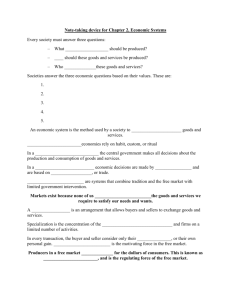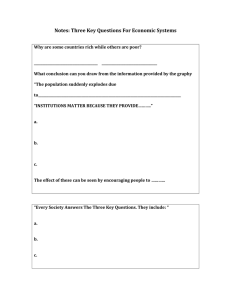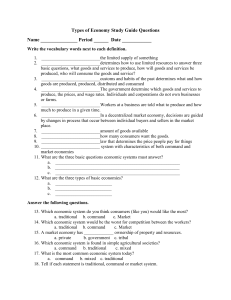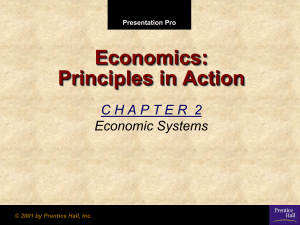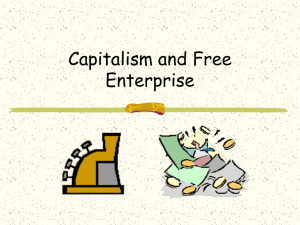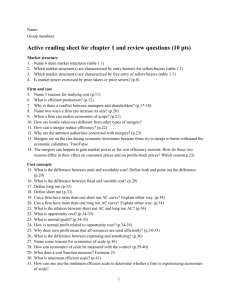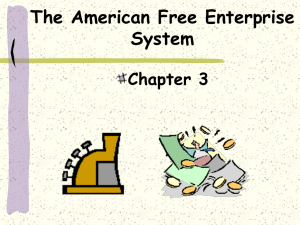Document
advertisement
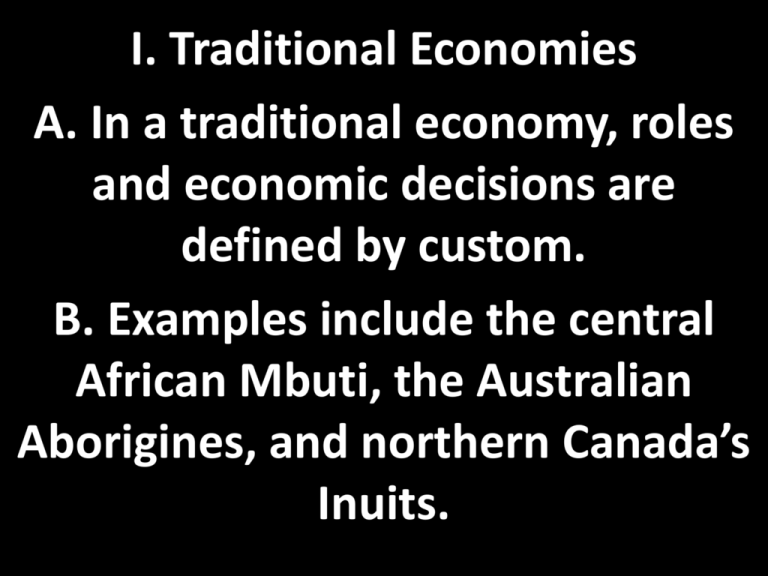
I. Traditional Economies A. In a traditional economy, roles and economic decisions are defined by custom. B. Examples include the central African Mbuti, the Australian Aborigines, and northern Canada’s Inuits. C. The advantages of a traditional economy is that everyone knows which role to play and there is little uncertainty about WHAT, HOW, and FOR WHOM to produce. D. A disadvantage of a traditional economy is the discouragement of new ideas and new ways of thinking. This leads to a lower standard of living than in other societies. II. Command Economies A. In a command economy, a central authority determines WHAT, HOW, and FOR WHOM to produce. B. Command economies include North Korea, Cuba, the former Soviet Union, and the People’s Republic of China. C. There are two advantages to a command economy: the ability to drastically change direction in a relatively short period of time and little uncertainty for its citizens. D. There are several disadvantages to a command economy: consumer needs may not be met; hard work is not rewarded; the necessary decision-making bureaucracy delays decisions; little flexibility to deal with day-to-day problems; and individual initiative goes unrewarded. III. Market Economies A. In a market economy, producers and consumers determine WHAT, HOW, and FOR WHOM to produce. In each market transaction, the consumer’s dollar acts like a “vote,” ensuring that producers continue to bring to market the goods and services that consumers want to buy. B. Examples include the United States, Canada, Japan, South Korea, Singapore, and parts of Western Europe. C. There are numerous advantages to a market economy: the ability to adjust to change; the high degree of individual freedom; the small degree of government involvement; the ability to have a voice in the economy; the variety of goods and services created; and the high degree of consumer satisfaction. D. Disadvantages to a market economy include the inability of the market to meet every person’s basic needs. Markets also do an inadequate job of providing some highly valued services such as justice, education, and health care. Citizens of a market economy must also face a high level of personal uncertainty and the prospect of economic failure. I. Economic and Social Goals A. Economic freedom, or the freedom for people to make their own economic decisions, is a goal highly valued in the United States. B. Economic efficiency means that resources are used wisely and that the benefits gained are greater than the costs incurred. C.C. Economic equity is the social goal that explains why so many people support laws against wage and job discrimination. D. Economic security is a social goal that results in programs to help support the ill, the elderly, and workers who have lost their jobs. E. Most economic systems strive for full employment, or providing as many jobs as possible. F. Price stability, or freedom from inflation, is important to anyone trying to provide basic necessities on a limited income and for anyone planning their economic future. G. Economic growth is an important goal because populations tend to increase and existing populations tend to want more goods and services. II. Trade-Offs Among Goals A. When goals are at odds, people must compare costs to benefits before resolving the conflict. B. Most of the time, people, businesses, and government are able to work out conflicts among goals. C. The flexibility of the American economic system allows choices and compromises. I. Competition and Free Enterprise A. Capitalism is a market economy in which private citizens own the factors of production. In a free enterprise system, there is limited government interference and businesses are free to compete. B. With economic freedom, people and businesses make their own economic choices. C. The result of voluntary exchange, in which buyers and sellers are free to decide whether or not to complete a transaction, results in both buyers and sellers believing that the good or service obtained is of more value than the money or product given up. D. Private property rights motivate people to succeed. Any rewards they earn are kept. E. The profit motive encourages entrepreneurship and is largely responsible for the growth of a free enterprise economy. F. Competition among sellers helps lower prices. II. The Role of the Entrepreneur A. Entrepreneurs use land, capital, and labor to make a profit. B. When an entrepreneur is successful, everybody benefits. Successful entrepreneurs attract other firms to the industry. C. The entrepreneur’s search for profits leads to new products, greater competition, more production, higher quality, and lower prices for consumers. III. The Role of the Consumer A. The consumer has much power in a free market economy. Consumer sovereignty describes the role of the consumer as ruler of the market. B. Consumers in the American economy express their wants in the form of purchases in the marketplace. The dollars they spend are the “votes” used to select the most popular products. IV. The Role of Government A. As a protector, a government may pass and enforce laws meant to prevent the abuse of consumers and workers. B. Governments are both providers and consumers. The U.S. government provides education and welfare and is the second largest consuming group in the economy after consumers. C. As a regulator, the government works to preserve competition. D. The promoting of national goals is an important role of any government. In the United States, achieving economic equity and security has resulted in a mixed economy, or modified private enterprise economy.
